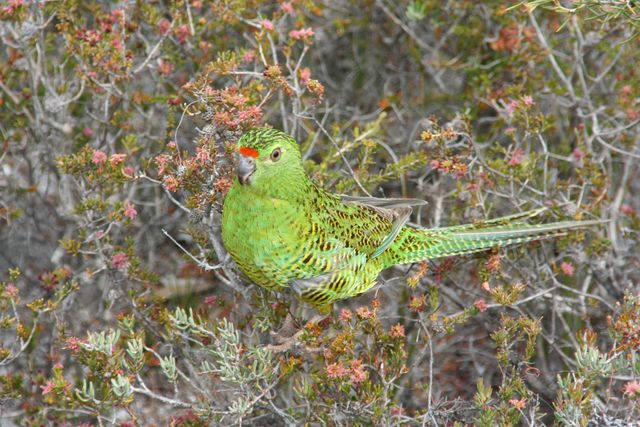Colours
Distinguishing features
The plumage is similar to the Eastern Ground Parrot, but feathers of the abdomen and under tail-coverts are bright yellow with indistinct black barring.
The fledgling Western Ground Parrot is a more neutral grey/brown in colour, while the juvenile Eastern Ground Parrot has bright green (adult) plumage in these areas. (Wikipedia)
Size
- Up to 30 cm (Length of specimen)
Wingspan
- Up to 60 cm
Synonyms
Distribution
Distribution and habitat preferences
It is endemic to Western Australia.
This species was found all along the coast of western southwest Australia from Perth north to Geraldton and along the South Coast east to Israelite Bay. However, it appears to have vanished from the west coast of Western Australia by 1900.
Nowadays, the range of this species is limited to two locations along the south coast of Western Australia, east of Albany with the largest population in Cape Arid National Park.
Low heathland usually on deep white sand with a large diversity of plants is the most common habitat. Parrots appear to be more abundant in heath which has not been burnt for decades, but have been found in areas six years after a burn. There is usually a fairly high component of sedges in their preferred habitat. (Wikipedia)
Diet
Seeds of various plants especially sedges. e.g. Mesomaelaena stygia. Flower buds and the base of flowers e.g. beaufortias, dryandras and grevilleas are also important parts of the diet.
One was observed feeding on the semi-succulent leaves of Daviesia pachyphylla. The diet is varied and utilises the high diversity of their habitat. (Wikipedia)

